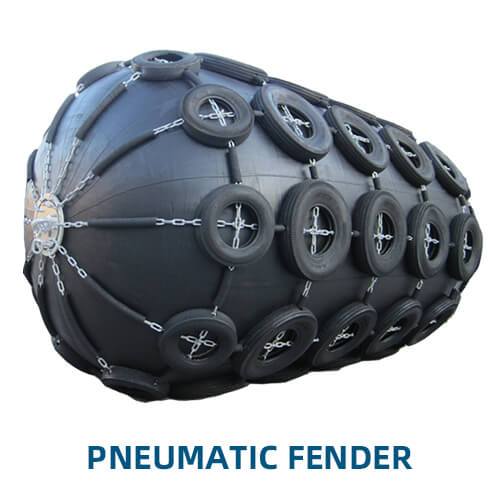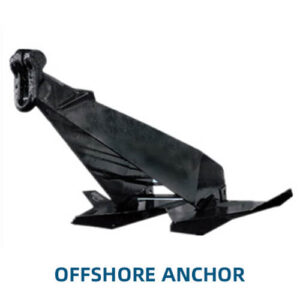Key Features of Pneumatic Fenders:
- Construction:
- Outer Shell: Made from durable, reinforced rubber or synthetic materials designed to withstand marine environments. The outer shell provides the structural integrity and protection against abrasion and environmental factors.
- Inner Bladder: Contains a flexible air bladder or inflatable chamber that holds compressed air. This air bladder is responsible for absorbing impact forces and providing cushioning.
- Design and Sizes:
- Shape: Pneumatic fenders typically have a cylindrical or toroidal (doughnut) shape. This design maximizes the contact area and provides effective cushioning during impact.
- Sizes: Available in a range of sizes, from small fenders for smaller vessels to large fenders for large ships or heavy-duty applications. The size and pressure of the fender can be adjusted based on the specific needs of the application.
- Operational Principles:
- Inflation: Pneumatic fenders are inflated with compressed air using a valve system. The inflation pressure can be adjusted to achieve the desired level of buoyancy and cushioning.
- Impact Absorption: The air bladder compresses upon impact, absorbing and dissipating the energy from collisions. This reduces the force transmitted to the vessel and dock, minimizing damage.
- Applications:
- Vessel Berthing: Used to protect ships and dock structures during berthing and mooring operations. Pneumatic fenders help prevent damage to both the vessel’s hull and the dock or pier.
- Ship-to-Ship Operations: Employed during ship-to-ship transfer operations to prevent collisions and manage the impacts between two vessels.
- Offshore Platforms: Used on offshore platforms and floating structures to protect against impacts from supply vessels and other marine traffic.
- Advantages:
- High Impact Absorption: Provides excellent shock absorption due to the air-filled bladder, which effectively cushions heavy impacts and reduces stress on both vessels and dock structures.
- Versatility: Suitable for various applications and can be used for both large and small vessels. The inflatable nature allows for flexibility in handling different sizes and types of marine operations.
- Ease of Handling: Lighter and easier to handle compared to solid rubber fenders, making them simpler to install and adjust.
- Adjustable Pressure: The air pressure can be adjusted to suit different operational requirements, allowing for customization based on the expected impact forces.
- Maintenance and Care:
- Inspection: Regularly inspect pneumatic fenders for signs of wear, damage, or air leakage. Check the outer shell and valve system for any defects.
- Inflation Checks: Ensure that the fender is maintained at the correct pressure level. Under-inflation or over-inflation can affect performance and durability.
- Cleaning: Clean the fenders to remove any accumulated debris or contaminants that could affect their performance or lifespan.
- Safety Considerations:
- Pressure Management: Monitor and manage the inflation pressure to prevent over-pressurization, which could cause damage or failure.
- Proper Installation: Ensure that the fender is properly installed and positioned to provide effective protection and avoid accidental detachment or misalignment.
Types of Pneumatic Fenders:
- Standard Pneumatic Fenders:
- General Use: Commonly used for general marine berthing and mooring applications. Suitable for a wide range of vessel sizes and types.
- High-Pressure Pneumatic Fenders:
- Heavy-Duty: Designed for applications requiring higher pressure and impact absorption. Often used for larger vessels or in more demanding environments.
- Customized Pneumatic Fenders:
- Special Applications: Tailored to specific operational requirements or unique applications, such as offshore platforms or specialized marine operations.
Pneumatic fenders are an essential component in marine and maritime operations, providing effective protection and impact absorption to prevent damage and ensure safe berthing and mooring. Their flexibility, high impact absorption, and ease of handling make them a valuable tool for managing collisions and protecting valuable marine infrastructure.






